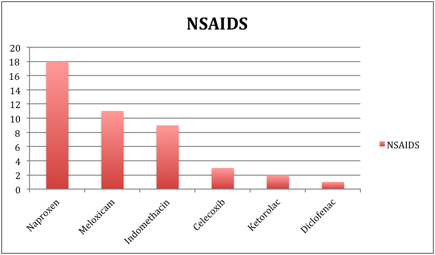Session Information
Session Type: ACR Poster Session C
Session Time: 9:00AM-11:00AM
Background/Purpose: Chronic Nonbacterial Osteomyelitis (CNO) is a rare condition of largely unknown etiology with variable clinical and radiological features. It is an aseptic auto-inflammatory bone disease. The aim is to describe a cohort of patients with pediatric CNO and their outcomes.
Methods: This is a retrospective descriptive study of 26 cases seen from March 2009 to September 2015. We collected demographic and clinical data.
Results: Ages ranged from 2 to 19 years (mean 13.1) and F:M sex ratio was 16:10. Of 26 patients, 17 had a bone biopsy, 16 had a whole body MRI of whom 4 also had a bone scan, and 5 had only a bone scan. Of those with MRI, 15 children had multifocal lesions and in 13, asymptomatic lesions were detected. From those with labs, 18 of 23 had elevated ESR and 12 of 20 had elevated CRP. Other associated conditions included palmar plantar pustulosis (N=1), psoriasis (N= 1) and acne (N=2). Family history of psoriatic arthritis (N=1), psoriasis (N=1) and CrohnÕs disease (N=1) were present. Treatment consisted of NSAID (N=25), prednisone (N=7) and other immunosuppressive therapy (N=21). Almost all patients were treated with NSAID: naproxen (N=18), meloxicam (N=11), indomethacin (N=9), celecoxib (N=3), ketorolac (N=2) and diclofenac (N=1). However, in half (N=13) the therapy had to be escalated: oral prednisone (N=7), methotrexate (N=9), pamidronate (N=4), adalimumab (N=3), sulfasalazine (N=2), leflunomide (N=1), azathioprine (N=1), infliximab (N=1). The most common complication was vertebral body compression fracture (N=6). Four children needed bisphosphonate infusions due to vertebral involvement. Outcomes in regards to resolution of clinical symptoms and bone detected lesions were overall excellent since all but one patient responded to therapy.
Conclusion: Whole body MRI is the imaging modality of choice in CNO and has emerged as the most sensitive way to document the number and extent of lesions. In our cohort of children with a whole body MRI, the majority had asymptomatic multifocal lesions. Fifty percent of the cohort did not respond to NSAID monotherapy requiring second line immunosuppressive therapy. The most common complication was vertebral body compression fracture. We suggest the use of bisphosphonates for vertebral involvement.
| CHARACTERISTICS | Mean age (years) | F:M (ratio) | Diagnostics (N=total) | Labs (%) | Complication (%) | Treatment (N=total) |
| 13.1 | ||||||
| 16:10 | ||||||
| Whole Body MRI | N=16 | |||||
| Bone Scan | N=9 | |||||
| Bone Biopsy | N=17 | |||||
| ESR | 78.2% | |||||
| CRP | 60% | |||||
| NSAIDS | 25 | |||||
| Prednisone | 7 | |||||
| Methotrexate | 9 | |||||
| Pamidronate | 4 | |||||
| Adalimumab | 3 | |||||
| Sulfasalazine | 2 | |||||
| Leflunomide | 1 | |||||
| Azathioprine | 1 | |||||
| Infliximab | 1 | |||||
| Vertebral fractures | 23% |
To cite this abstract in AMA style:
Taneja A, Rouster-Stevens K, Prahalad S, Angeles-Han S. Clinical Characterization and Outcomes of Pediatric Chronic Nonbacterial Osteomyelitis [abstract]. Arthritis Rheumatol. 2016; 68 (suppl 10). https://acrabstracts.org/abstract/clinical-characterization-and-outcomes-of-pediatric-chronic-nonbacterial-osteomyelitis/. Accessed .« Back to 2016 ACR/ARHP Annual Meeting
ACR Meeting Abstracts - https://acrabstracts.org/abstract/clinical-characterization-and-outcomes-of-pediatric-chronic-nonbacterial-osteomyelitis/


